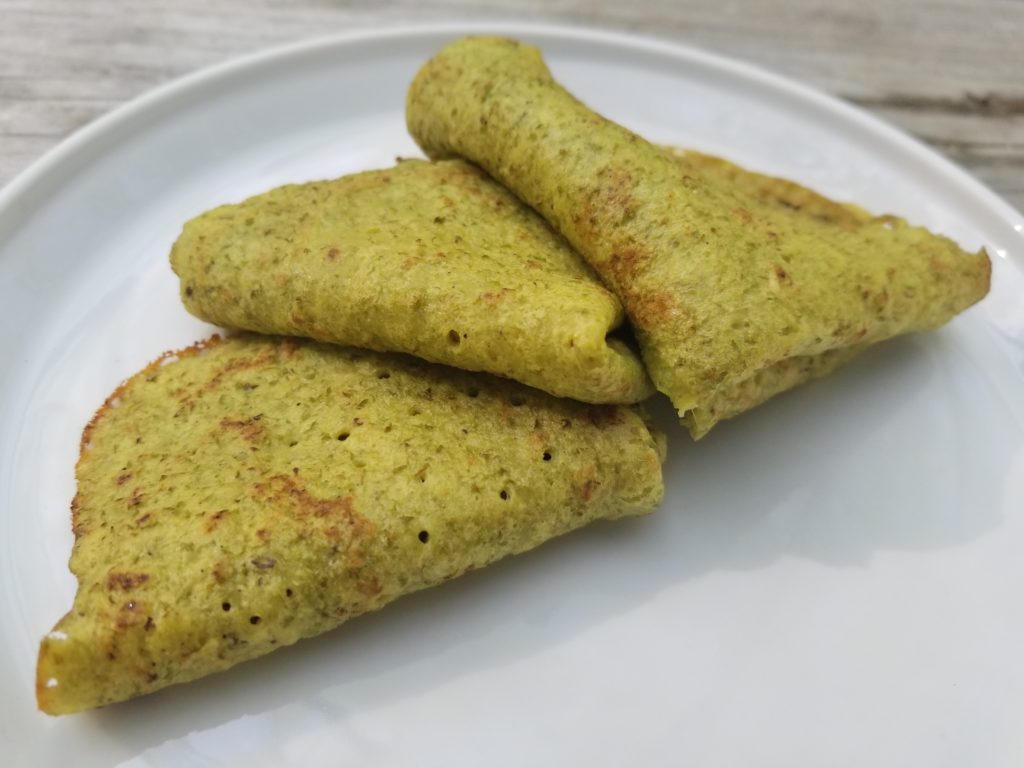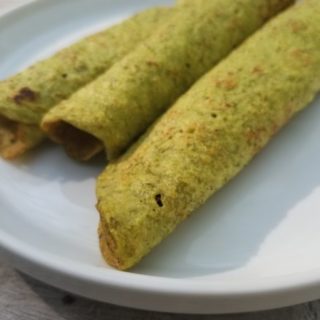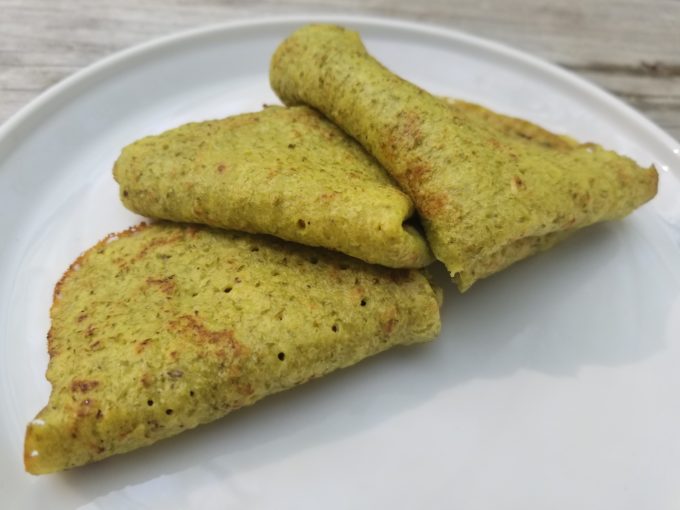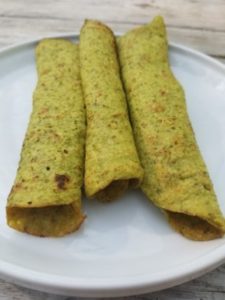With many, or even most of the people in India being vegetarian, their diets and cuisine are rich with beans and pulses. Green Gram Pesarattu, also commonly [though not accurately] referred to as Moong Dal Dosa, is a great example of this.
A pulse is any edible seed that grows in a pod, such as the mung bean. Lentils and peas are a few other examples. When these are shelled and split they become what is known as daal or dal (stemming from Sanskrit for ‘to split’).
At an Indian market you can fine packages of dry dal for purchase – moong dal (split mung beans); chana dal (split chickpeas/garbanzo beans); toor dal (split pigeon peas); masoor dal (split red lentils); urad dal (a type of black bean also called black lentil); and so on. There are also prepared dal dishes which go by the same names but are a stew or sauce which is made from one of the above pulses, typically cooked with onions, tomatoes, and spices. These are often served with rice or a bread such as roti or chapati.
As for the word gram, well that is simply the Indian subcontinent English term for a whole pulse; thus the name Green (the color of mung beans) Gram (because they are used whole) and Pesarattu : a crepe-like bread made from mung beans that is so similar to dosa it is often called Moong Dosa.)
What makes dosa different from Pesarattu? A true dosa is made with a fermented batter containing rice and urad gram, and often seasoned with fenagreek. As you will see below, the pesarattu recipe doesn’t contain any of these three. Instead, pesarattu are made with whole mung beans that have been soaked/sprouted for four hours to overnight and then ground or blended with fresh ginger and green chilies.
Customizing and Serving Suggestions:
There are some additional options depending on your taste: season your batter with asafoetida (hing), cumin, garlic, curry, or other favorite spice blend; add fresh onions to the batter before grinding/blending; or sprinkle chopped green or white onions, fresh green chilies, and/or cilantro over the batter when it has been spread in the pan.
As for a finished dish, pesarattu is most often served with a side topping, such as coconut chutney (pol sambol), cilantro chutney (coriander sambol), tamerind chutney (sambal asam), and/or with umpa, or sambar.


Pesarattuu (Green Gram Dosa)
Ingredients
- ½ cup dried mung beans (Moong dal, or split and shelled mung beans can be used just as well. Your pesarattu will simply be yellow instead of green-ish.)
- ½ cup water
- 2 inch piece fresh ginger
- 1 whole green Thai chili (omit for children, as needed)
- 1 t sea salt OR a pinch of Kala Namak (Black Salt) if you have it on hand, but be aware of the the bold flavor it will bring.
- Additional seasonings or add-ins, as desired. (See Note for suggestions.)
- ghee, oil, butter, or cooking spray for frying
Instructions
- Cover the whole mung beans in water and soak for 4 hours to over-night.
- Blend together the softened beans, ginger, chili, and salt, with half a cup of water. (Plus any additional seasonings as desired.) You should end up with a runny batter that still has a rough texture. Add a few more tablespoons of water, more, or less as needed. The thinner the batter the crispier the pesarattu will be. Leaving the batter to rest for 30 minutes is best practice, but can be skipped if time doesn't allow.
- Preheat a heavy skillet or crepe pan well and reduce heat to medium/medium-high. Add a small amount of ghee/better/oil as desired and spread well across the pan.
- Pour in batter and spread by tilting the pan or using a spatula, until the entire surface is covered thin and evenly. (This is the time to sprinkle on any add-ins such as chopped onions, chilies, or cilantro.)
- In restaurants the cooking surface tends to be very hot eliminating the need to flip the pesarattu, however it is entirely acceptable to flip them when homemade. Either way, you will need to wait until the edges have crisped and are golden before removing from the pan or flipping.
- Serve the pesarattu open, folded, or rolled with soft cheese, chutney, sambal, umpa, sambar or other prepared dal as desired.



Post a comment